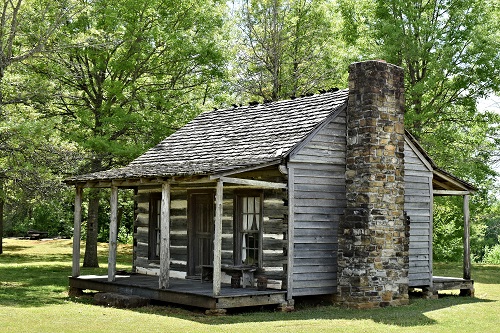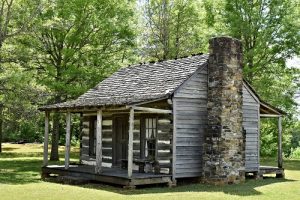
Log Cabin Longevity

I recently posted several photographs of a log cabin. The cabin was built over 200 years ago in Tuscumbia, Alabama beside what was once Jackson’s Military Road.
The road took people from Nashville to New Orleans, was 483 miles long and a 17 day trip. Cabins and sheds were built along the way to accommodate travelers’ needs.
One such cabin was the Cold Water Stagecoach Stop, built around the Big Spring where Tuscumbia (formerly Cold Water) was formed.
Can you image building a house today and it lasting over 200 years? Even with meticulous maintenance, I doubt that our modern day designs and codes would enable a house to last that long.
I’ve read articles and have seen photographs of lumber from hundreds of years ago compared to today’s lumber. We are harvesting trees for lumber after 20 years instead of milling lumber from trees that were hundreds of years old. The difference is clearly seen in the density of the wood and the denser the wood, the stronger it is and the longer it will last.
We talked to a builder long ago about building a log cabin. Our cabin would have arrived as a kit and the builder would have put it together. I often wondered how long that cabin would have survived. The round logs that we had chosen were not coming from trees that were hundreds of years old. But would the fact that the building was made from logs and not milled lumber have made a difference in its longevity?
I don’t know the answer to that question. I am, however, fascinated that some of those log cabins from America’s earliest days have survived, some with little to no maintenance over the years. Some of them have even been picked up and moved, as the Cold Water Stagecoach Stop was moved across the road from its original location.
My tastes have changed over time and I no longer wish to live in a log cabin. But I still respect the work, craftsmanship and longevity of those early buildings.
